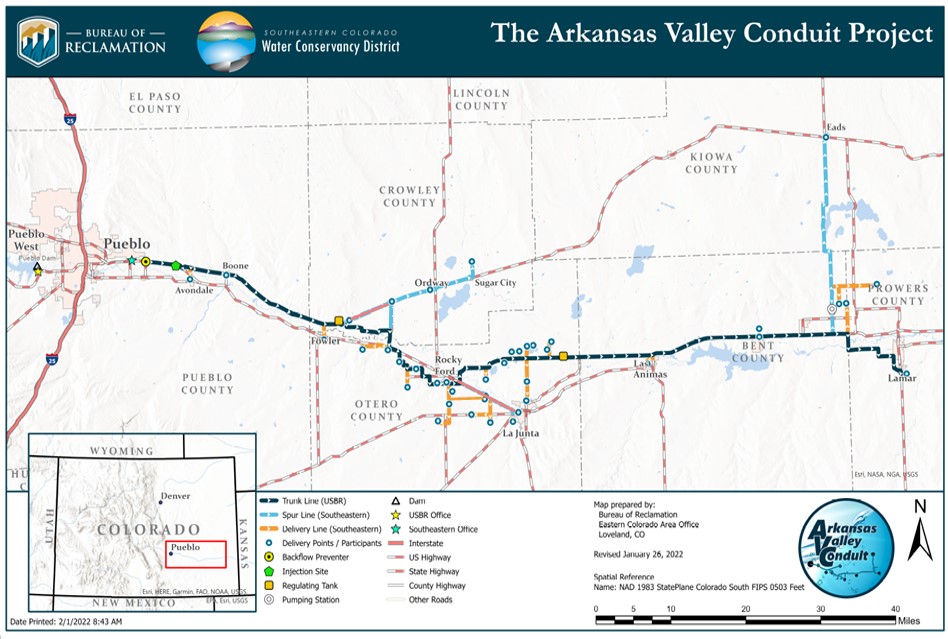- Home
- Admin
- Meetings
- Fry-Ark Project
- Projects
- Water Management
- Agriculture Conservation
- Arkansas River Basin Water Rights
- Conservation Plans
- Conservation & Education
- Education
- Fryingpan-Arkansas Project Water Import Tracking
- Inclusion into the Southeastern Colorado Water Conservancy District
- Legislation
- The Allocation of Fryingpan-Arkansas Project Water & Project Water Return Flows
- RRA
- Snow Pack Monitoring
- Water Conservation BMP Tool Box
- Winter Water Storage
- Water Wise Gardening
- Login
Arkansas Valley Conduit
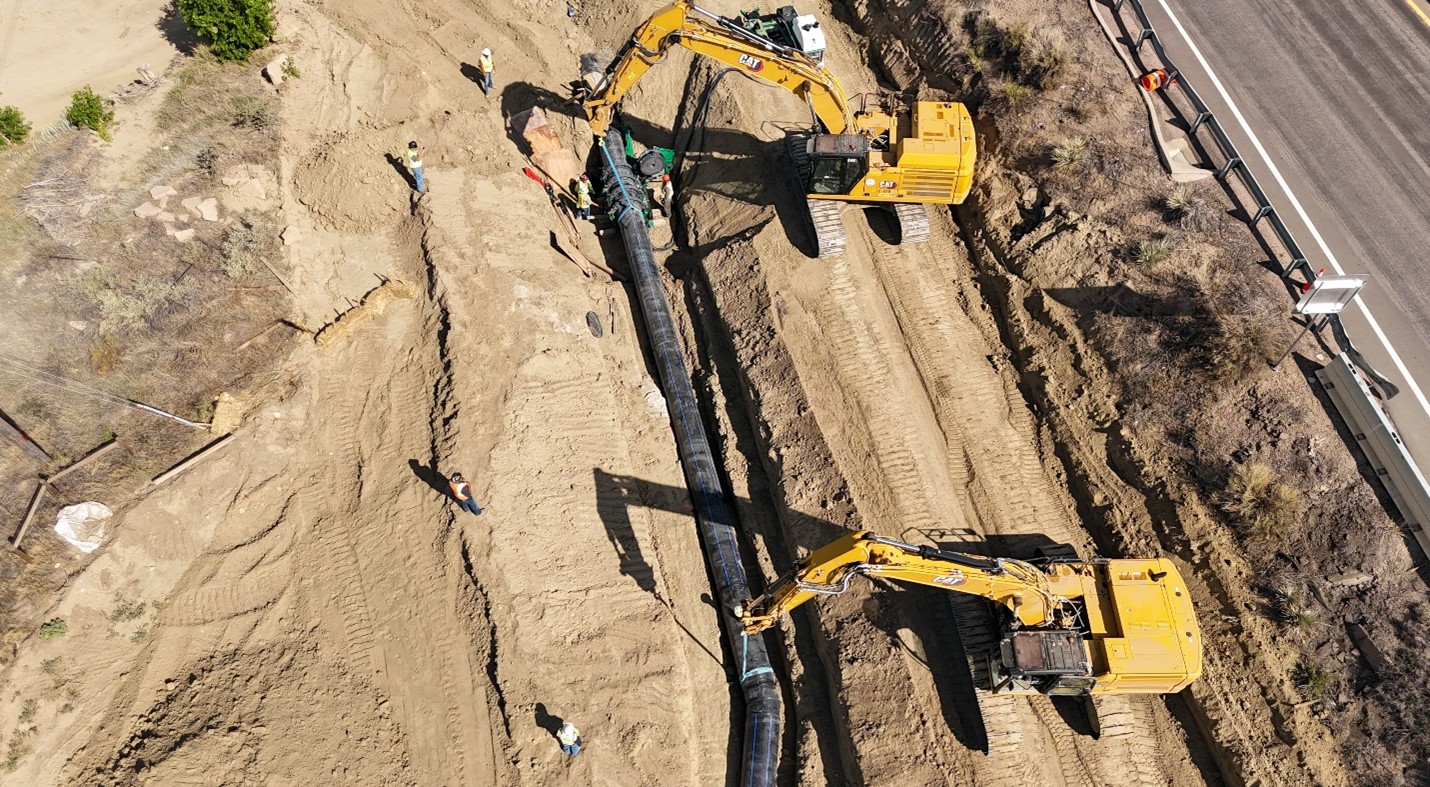
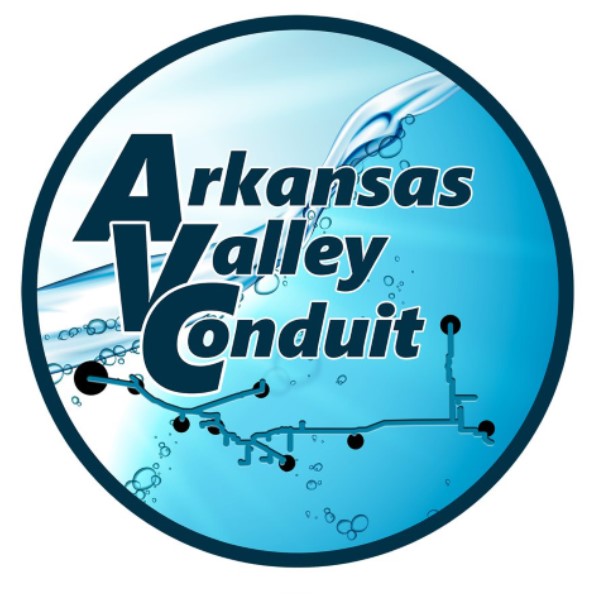
Description
The Arkansas Valley Conduit (AVC) is a 130-mile pipeline with spurs that will serve 39 communities and 50,000 people east of Pueblo. It will deliver filtered water ready for treatment from Pueblo Reservoir. The AVC will supplement existing water supplies, which face state compliance issues because of naturally occurring salinity or radionuclide contamination. Most of the participants rely on groundwater and need a new reliable supply of fresh water.
History
The cities of the Lower Arkansas Valley in Colorado have awaited the construction of the AVC for decades. The AVC was authorized by Congress as part of the Fryingpan-Arkansas Project in 1962. It was never built largely because of the inability of participants to repay construction costs. In 2009, Congress amended the original Fry-Ark legislation. The amendment featured a cost-sharing plan with 65 percent federal and 35 percent local funding. The locally funded portion will be repaid by the Southeastern Colorado Water Conservancy District (District) to the federal government over a period of 50 years.
Milestones
April 28, 2023 – Reclamation and the SEWCD celebrate the beginning of construction of the AVC with a groundbreaking attended by about 150 people.
September 29, 2022 – Reclamation announces the first construction contract for the AVC with WCA Construction LLC.
March 18, 2022 – A three-party contract between Reclamation, SECWAE and Pueblo Water will provide conveyance, treatment and transmission of AVC water to a point 15 miles from Pueblo Reservoir.
October 3, 2020 – AVC Ceremonial Groundbreaking Ceremony at Pueblo Dam.
June 29, 2020 – Colorado Governor Jared Polis signs a bill authorizing $90 million in loans and $10 million in grants for the AVC.
2020 - The AVC receives $28 million in federal funding to finish design and begin construction of the long-awaited pipeline. Funding since then totals $221million.
2014 – Reclamation issued a Record of Decision for the AVC, which established a route (Comanche North) and scope of work for the project.
2013 – The Bureau of Reclamation (Reclamation) completed a Final Environmental Impact Statement for the AVC.
2009 – P.L. 111-11 passed, allowing miscellaneous revenues (excess-capacity contract payments) from the Fryingpan-Arkansas Project to be applied to AVC construction and repayment. These payments will be available beginning in 2022 and initially total about $3.5 million annually, increasing in future years.
1962 – The AVC is authorized by Congress as part of the Fryingpan-Arkansas Project Act.
Arkansas Valley Conduit Monthly Reports
 |
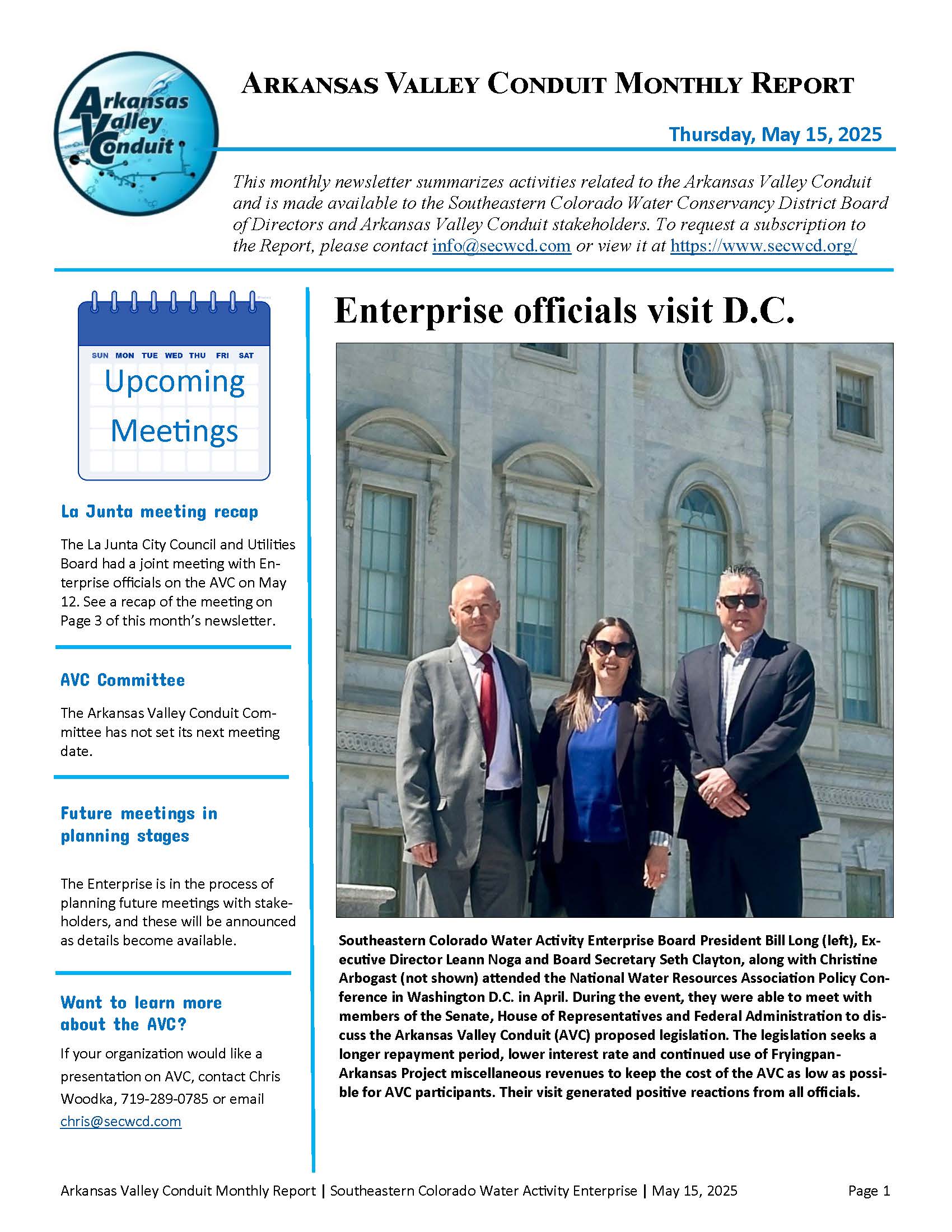 |
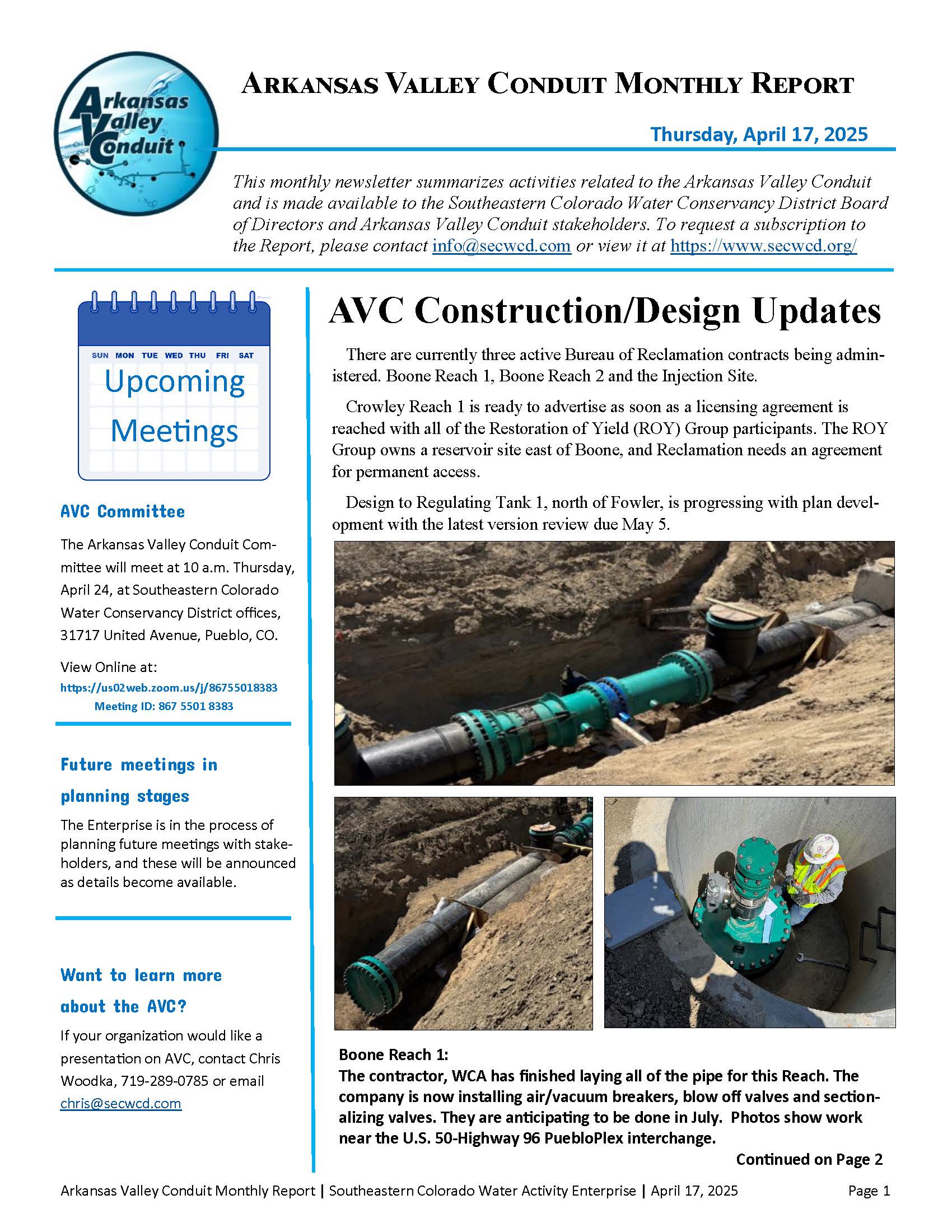 |
|
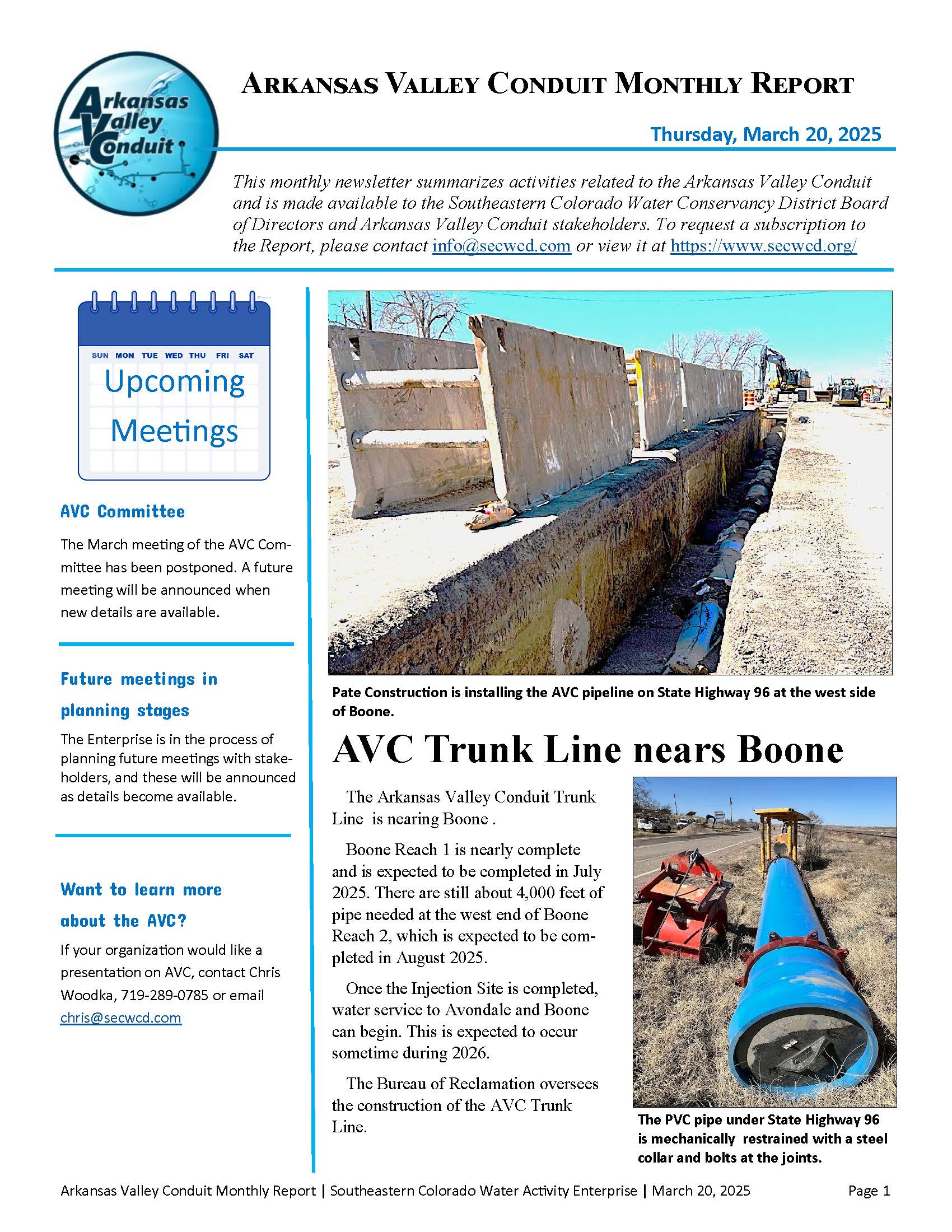 |
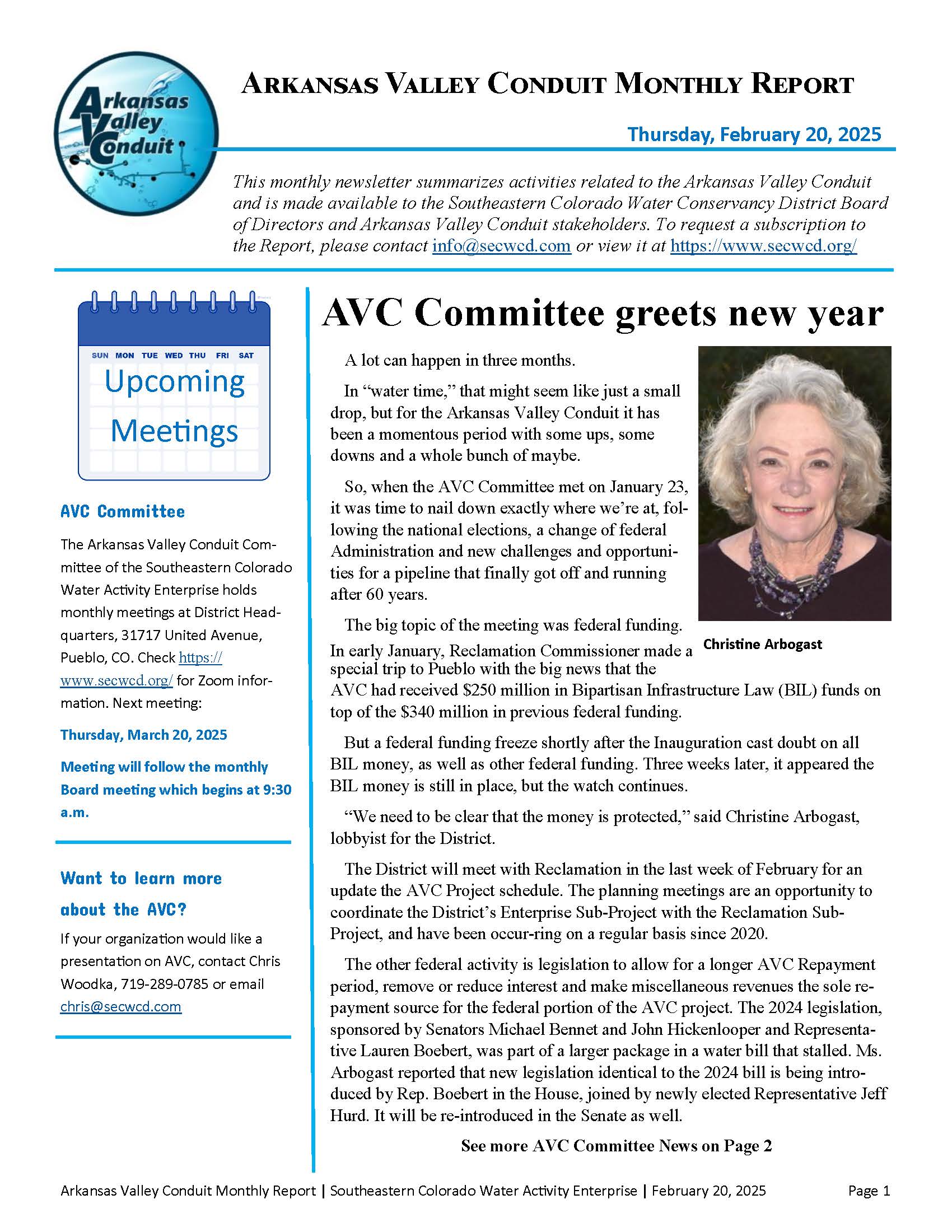 |
 |
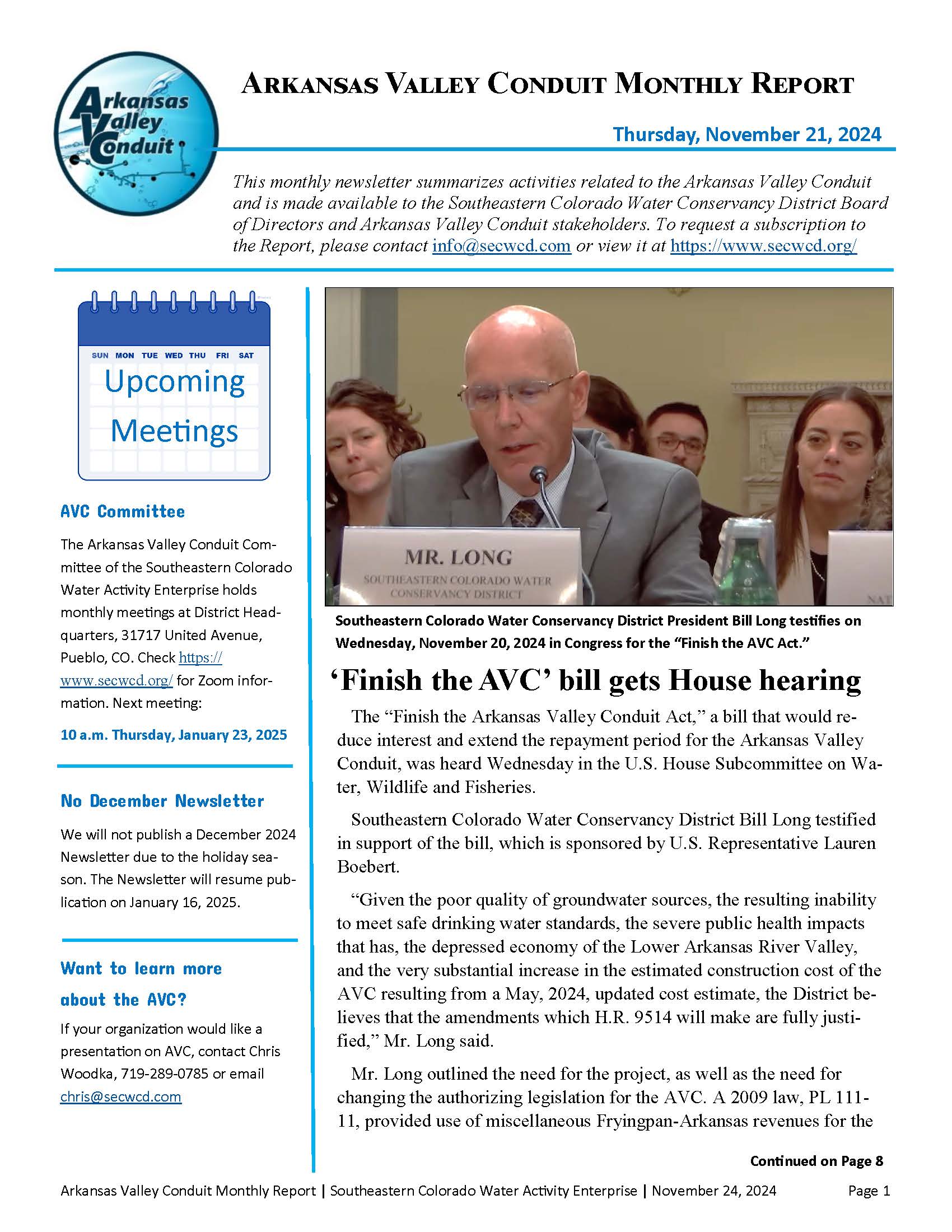 |
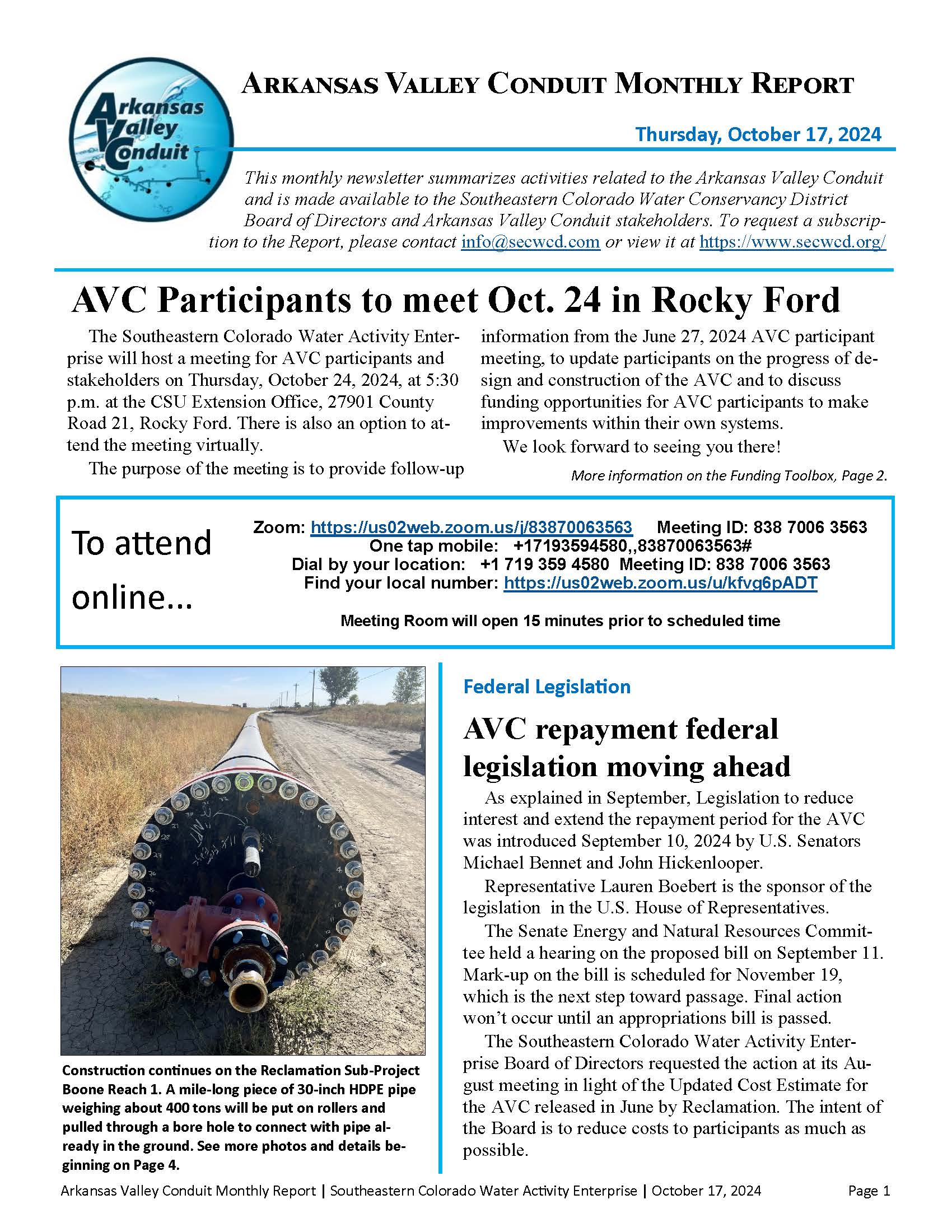 |
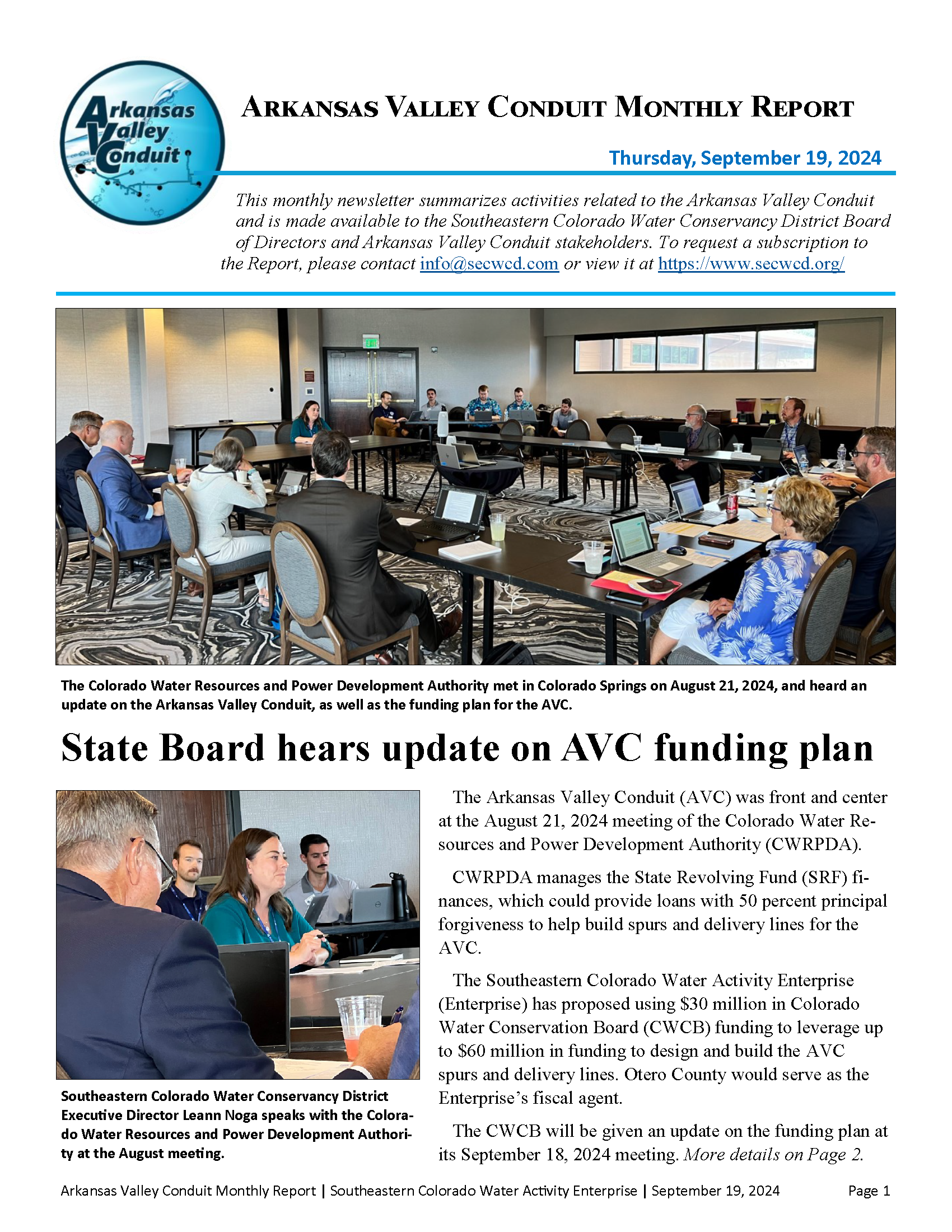 |
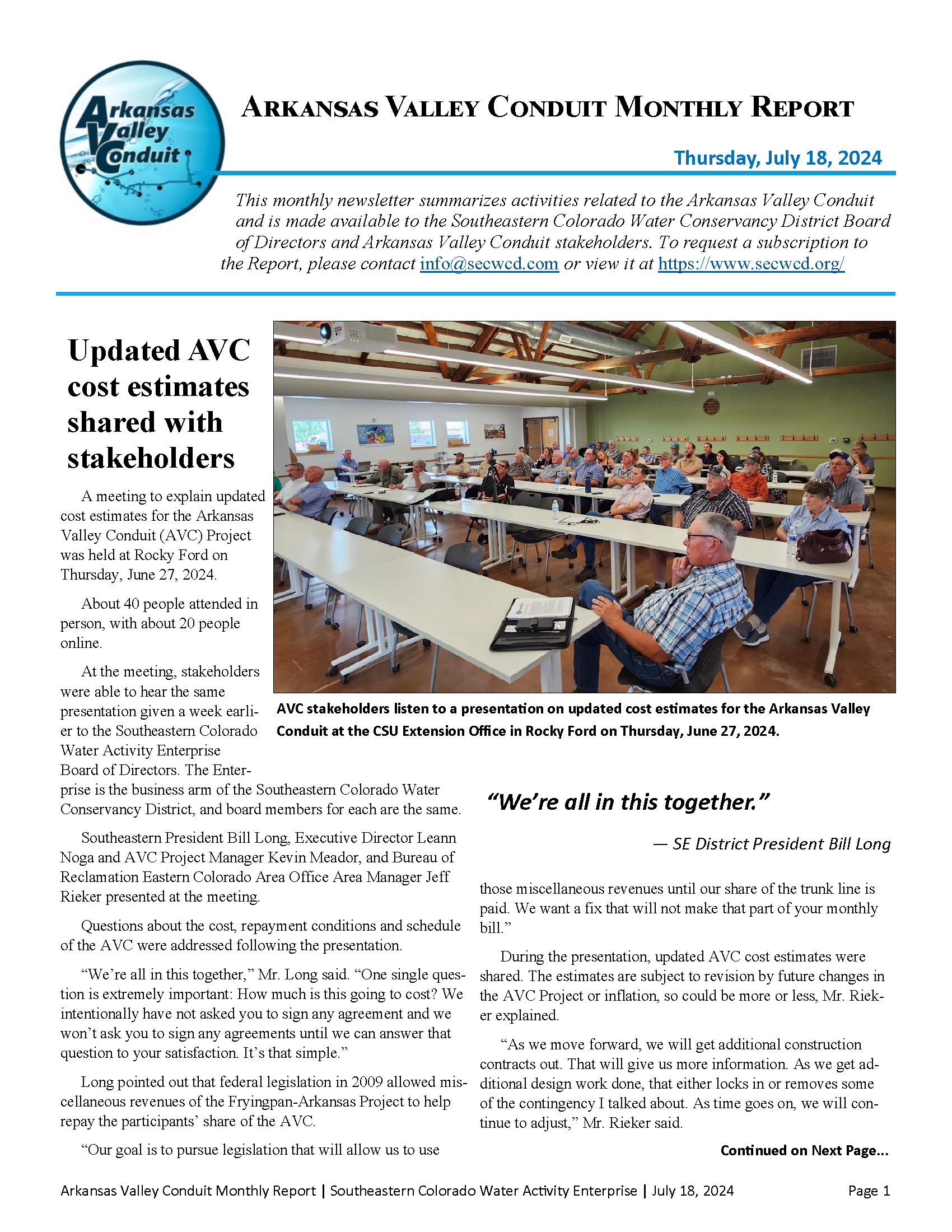 |
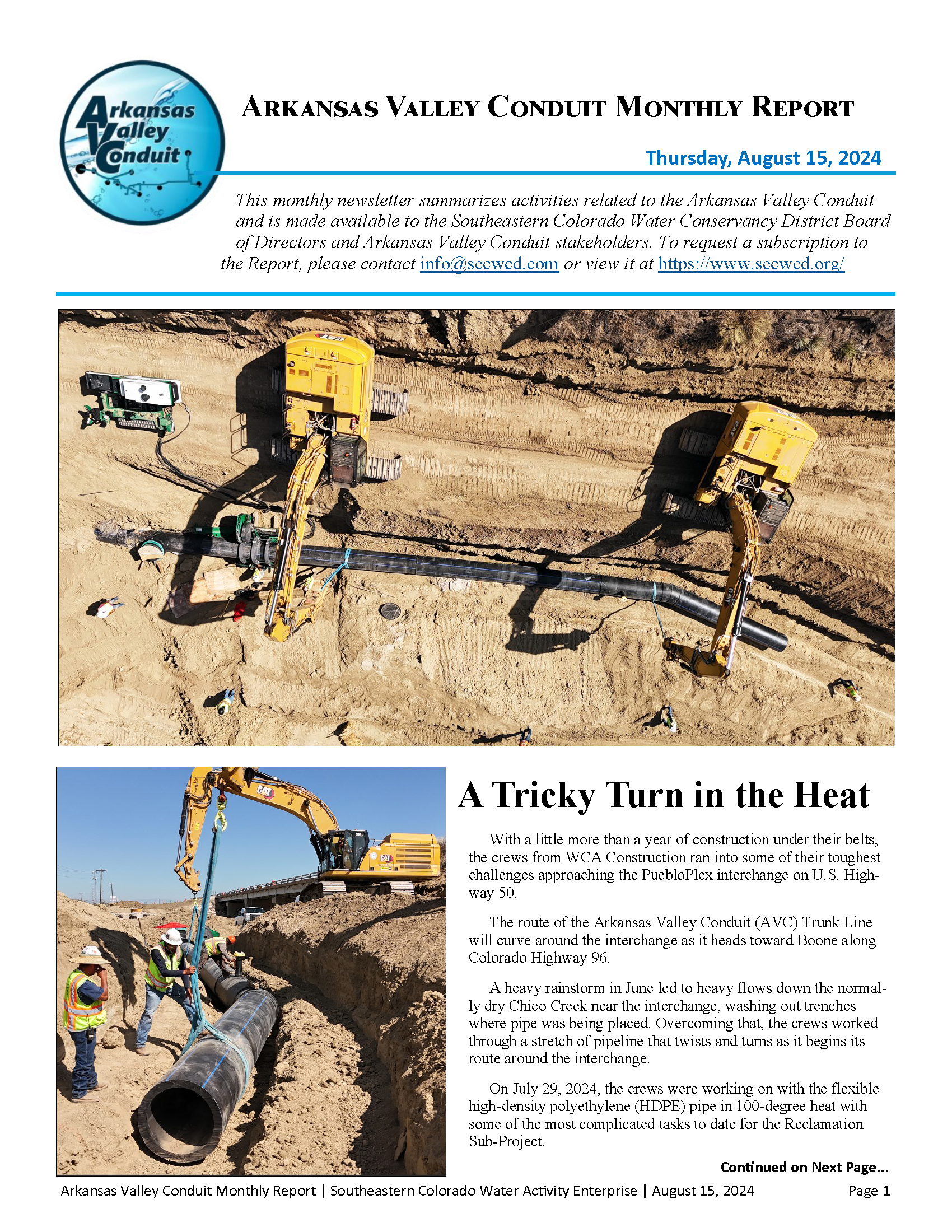
|
Pueblo County
- Town of Boone
- Avondale Water & Sanitation
Crowley County
- 96 Pipeline Company
- Crowley County Water Association
- Town of Crowley
- Town of Olney Springs
- Town of Ordway
- Town of Sugar City
Bent County
- Hasty Water Company
- City of Las Animas
- McClave Water Association
Prowers County
- City of Lamar
- May Valley Water Association
- Town of Wiley
Kiowa County
- Town of Eads
Otero County
- Beehive Water Association
- Bents Fort Water Company
- Town of Cheraw
- East End Water Association
- Eureka Water Company
- Fayette Water Association
- Town of Fowler
- Hilltop Water Company
- Holbrook Center Soft Water
- Homestead Improvement Association
- City of La Junta
- Town of Manzanola
- Newdale-Grand Valley North Holbrook Water
- Patterson Valley
- Riverside Water Company
- City of Rocky Ford
- South Side Water Association
- South Swink Water Company
- Town of Swink
- Valley Water Company
- Vroman Water Company
- West Grand Valley Water
- West Holbrook Water
Click Here for the Final Environmental Impact Statement
For more information: https://www.usbr.gov/gp/ecao/avc/
.

